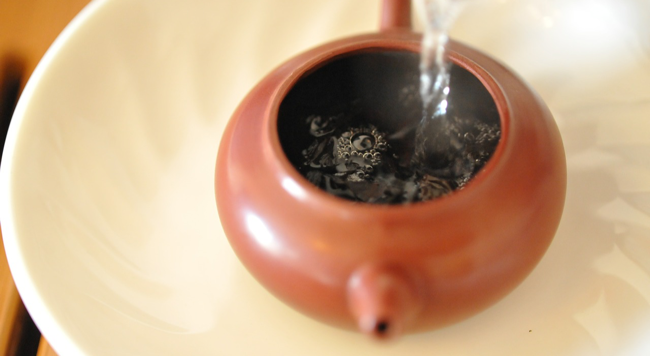A teapot is useful not for what you can see. It is useful for what you cannot see — its emptiness.

What does a teapot look like?
It has a belly, a handle, and a spout. Sometimes, you can find paintings on its body.
These are some common features of a teapot, and probably also what you would think of when a teapot is mentioned. They are, nevertheless, NOT what a teapot is built for.
A teapot is useful not for what you can see. It is useful for what you cannot see — its emptiness.
Just imagine if the teapot is built without the empty space! Where does the tea go? If there is nowhere in the teapot for the tea to go, what is the use of a teapot? However elegant a teapot is, it’s of no use without the space to hold the tea. It can still be useful as a piece of art, but not a teapot.
What we can see in a teapot is the being, but it is the non-being — the emptiness that we cannot see — that makes a teapot useful.
The features can enhance the value of the teapot, but they are built to serve the usefulness of the emptiness. If you are seeing a teapot as a teapot, the emptiness is the reason for its existence.
“We work with the substantial, but the emptiness is what we use,” says Lao Tzu.
Knowing the difference between being and non-being helps us to see the value of an existence.
So a person is useful not only for his look; but his ambition and creativity. For the same token, he’s useful not for his skills, but the mind that direct the use of the skills.
Seeing the difference between the being and the non-being of a person enables you to see the true value of a person.
Thirty spokes are joined together in a wheel,
but it is the center hole
that allows the wheel to function.We mold clay into a pot,
but it is the emptiness inside
that makes the vessel useful.We fashion wood for a house,
but it is the emptiness inside
that makes it livable.We work with the substantial,
but the emptiness is what we use.Laozi Tao Te Ching 11







Thank you for this article! It struck me that this is an excellent way to describe creativity. Productive creative exploration requires constraints that come from building a deep understanding of the problem we seek to solve. So too, we build a pot to define the space with which we pour in the creative hot water and tea leaves. Without the pot, we simply have a hot mess on the table.
An interesting interpretation!
i like it